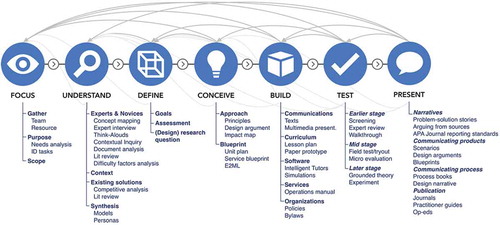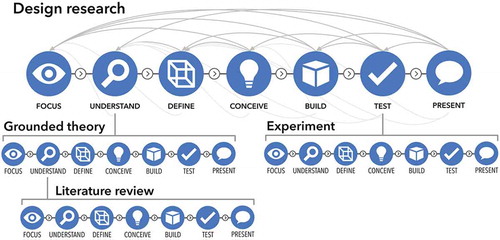Figures & data
Figure 1. The design process consists of seven iterative phases: focus, understand, define, conceive, build, test, and present.

Figure 2. Design argument form as described by van den Akker (Citation1999).

Figure 3. Scientific research methodologies (both qualitative and quantitative) follow a design process and produce products such as theories and models that can be incorporated into the design of another product such as an educational intervention – DR thus recursively nests different scientific processes to do its work.

Figure 4. Stage-dependent search (bottom) can find and validate working intervention with fewer resources than traditional search (top).

Table 1. The seven phases of design and design research process.
